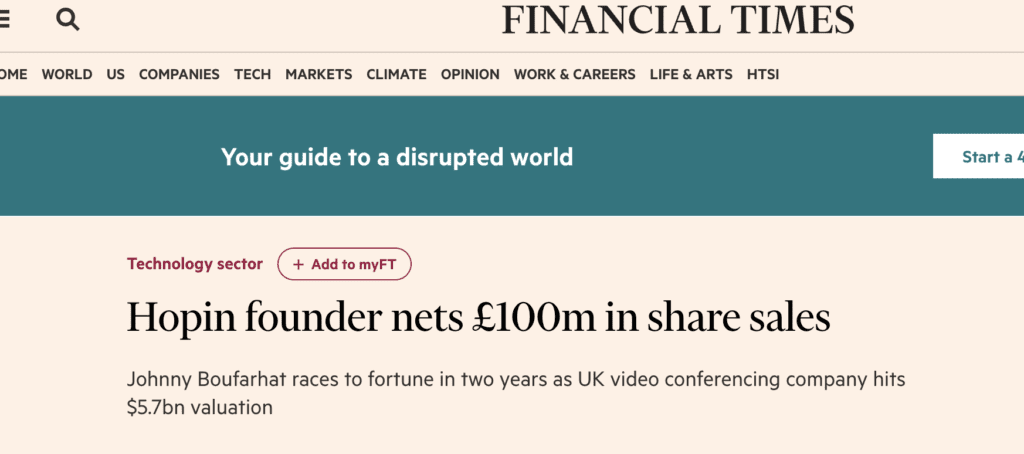Dear SaaStr: What is considered a fair or happy medium secondary amount for the founders to take off the table at a Series B VC funding round?
Secondary sales done right truly align founders and the company and incent them to go long. See Brian Halligan’s (co-founder and Chairman of HubSpot) great learning and example here:
“Make a large pie & take a bite along the way: One thing Sequoia did in our Series D round was allow us to sell some of our common shares to them as part of the round. This turned out to be a great idea for me and Sequoia. It “stiffened” our backbone when it came to acquisition interest and kept us focused on building a company our grandkids would be proud of. This had the added benefit of aligning our interests very well with our investors. …In retrospect, it was likely one of the worst financial decisions I’ve ever made, but I don’t regret it as it did the trick in the moment and the pie’s plenty big.”
“Secondary” liquidity for SaaS founders has been part of the VC toolkit for funding later stage SaaS founders since at least 2010-2011 or so. I got a significant offer as we approached $10m ARR back in the day at Adobe Sign / EchoSign — and I should have taken it.
But secondary liquidity got abused by founders (and VCs enabled them) in the Boom Times of mid 2020 to late 2021, too much was done too early, and there are many regrets. We’re dealing with a lot of drama from that today, with founders who made millions or more before really getting to scale — and are now half-checked out. Or totally checked out:
We’re more back to normal now. So what makes sense … in a more normal world?
I’ve come up with a set of rough guidelines over the years for founder secondary liquidity (i.e., selling some of your shares in a round) that’s worked well outside of those Crazy Times:
- If valuation is >= $100m,
- And the company is doing $8m-$10m+ in revenue or more (i.e., a real company), the more the better,
- And the founder sells < 5% of her holdings,
- It’s not that big of a deal, and probably a good idea. If it makes things less stressful for the founders, that’s better for everyone.
Where I get anxiety is if it’s neither of those two cases. If the founder is selling > 5%, they’re not just getting a little liquidity … they’re selling out a material amount of her stake. That’s worrisome. In fact, it’s always a flag of a founder that doesn’t 100% believe if they sell more than 5% of their holdings IMHE.
And if the price they is selling is less than $100m pre, it sort of tells me they aren’t really building a Unicorn.
If you think you are building a Unicorn, why sell > 5% of your shares at < 1/10th the exit price?
No one would. It’s just getting good. Anyone would want to hold in that scenario, other than to get some capital to buy a house, pay for kids’ college, etc. Certainly any founder crazy enough to be really trying to build something huge wouldn’t want to sell too much as 10% of the price they’ll ultimately get.
Actions speak louder than words.
So I am 1000% in favor of founder / secondary liquidity. But if it’s too much (as a %), too early (valuation), I do get worried.
My advice generally then is either wait until the next round (take less dilution, make more on the secondary sale). Or maybe, sell your company — if you don’t really believe. Or maybe, just raise a little later so the math pencils out better.
And if the founders still want to do it anyway, it’s fine by me. I’ll just worry 🙂
More here: https://www.saastr.com/7-guideli…
(Go Long image from here)


